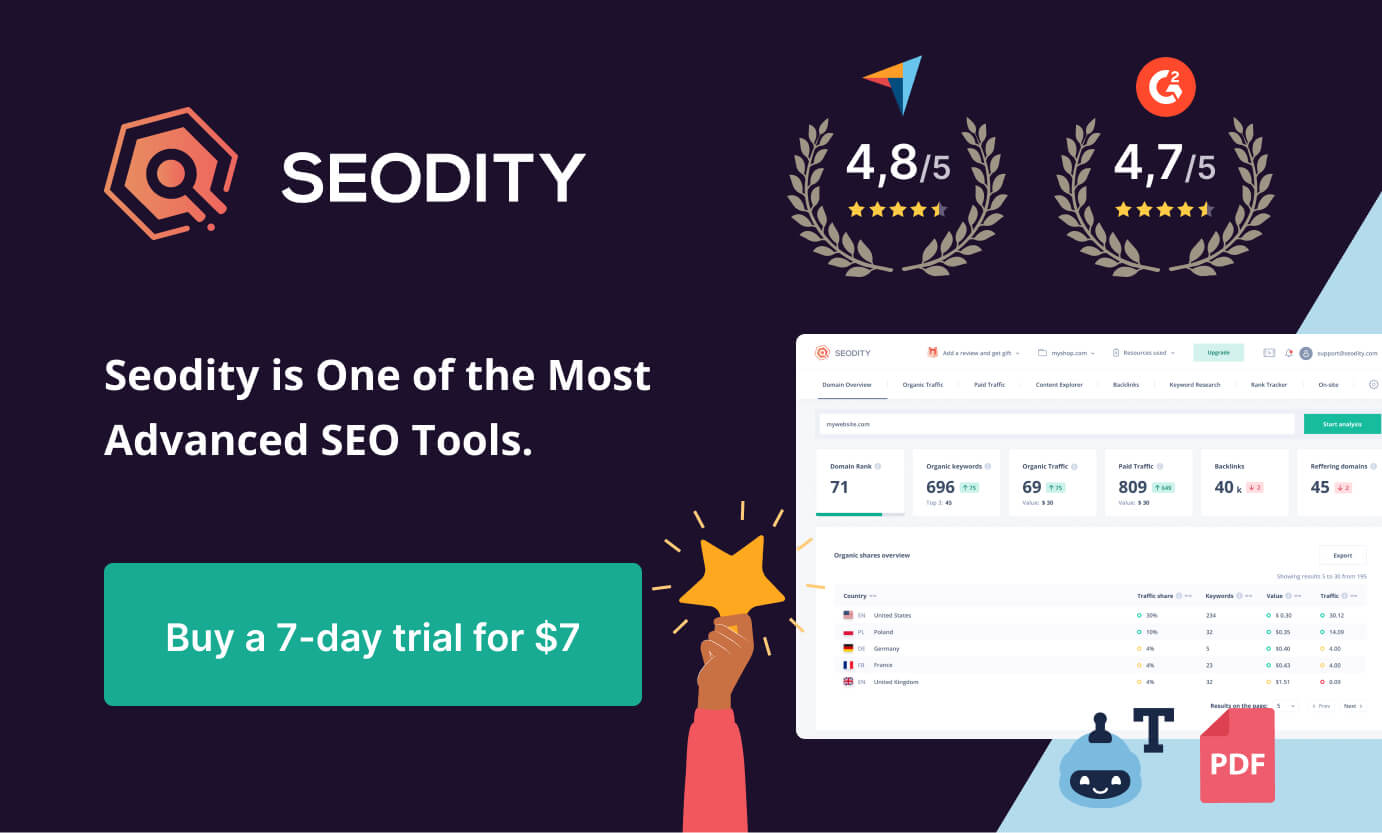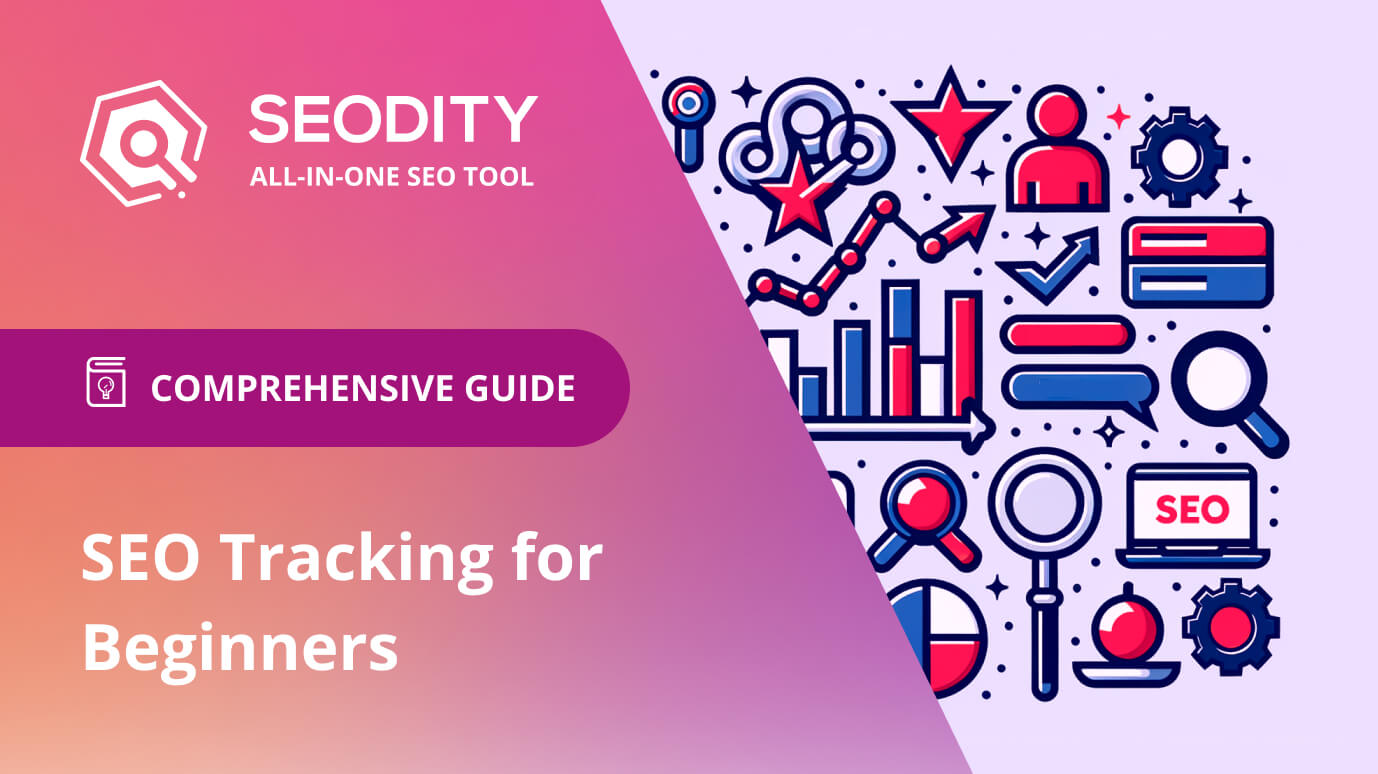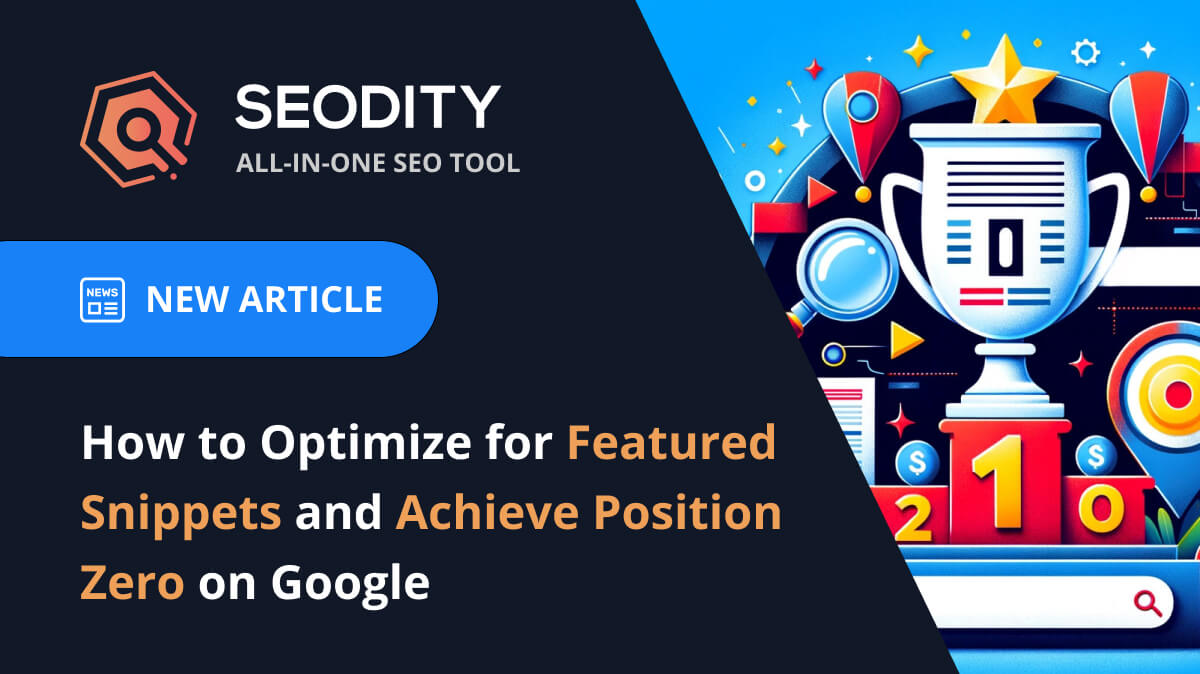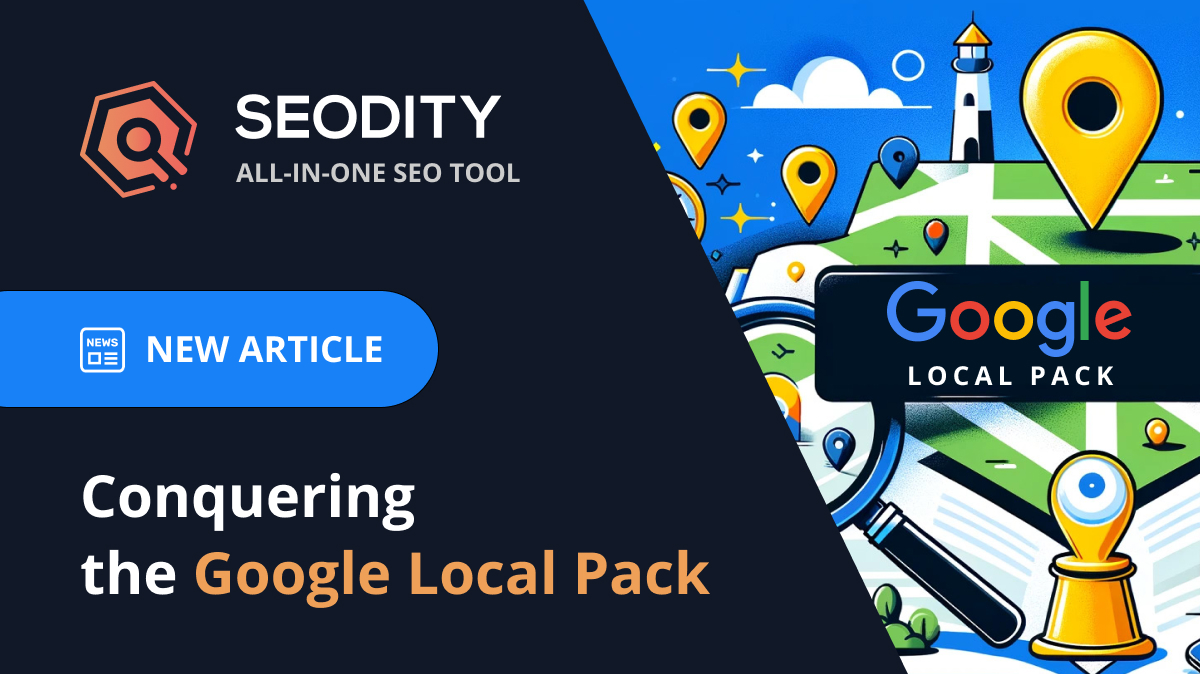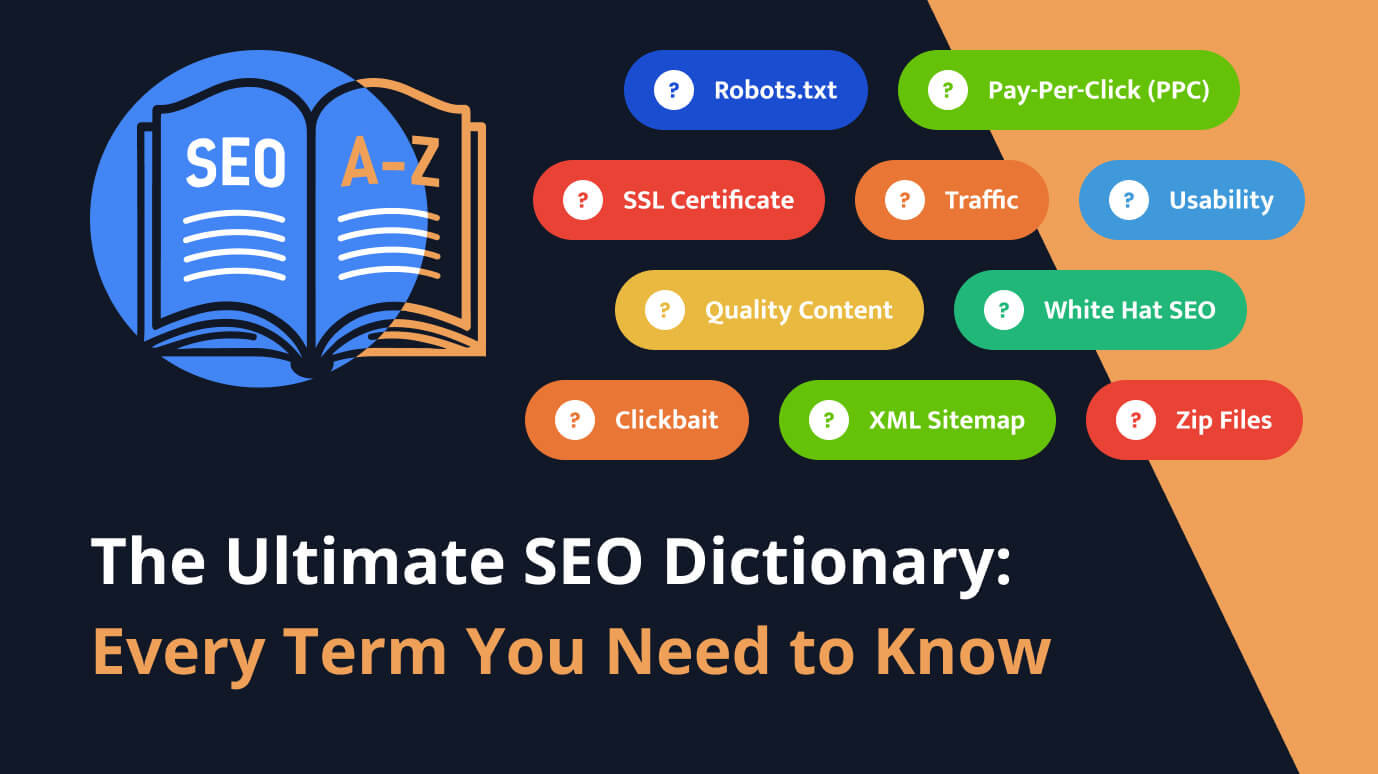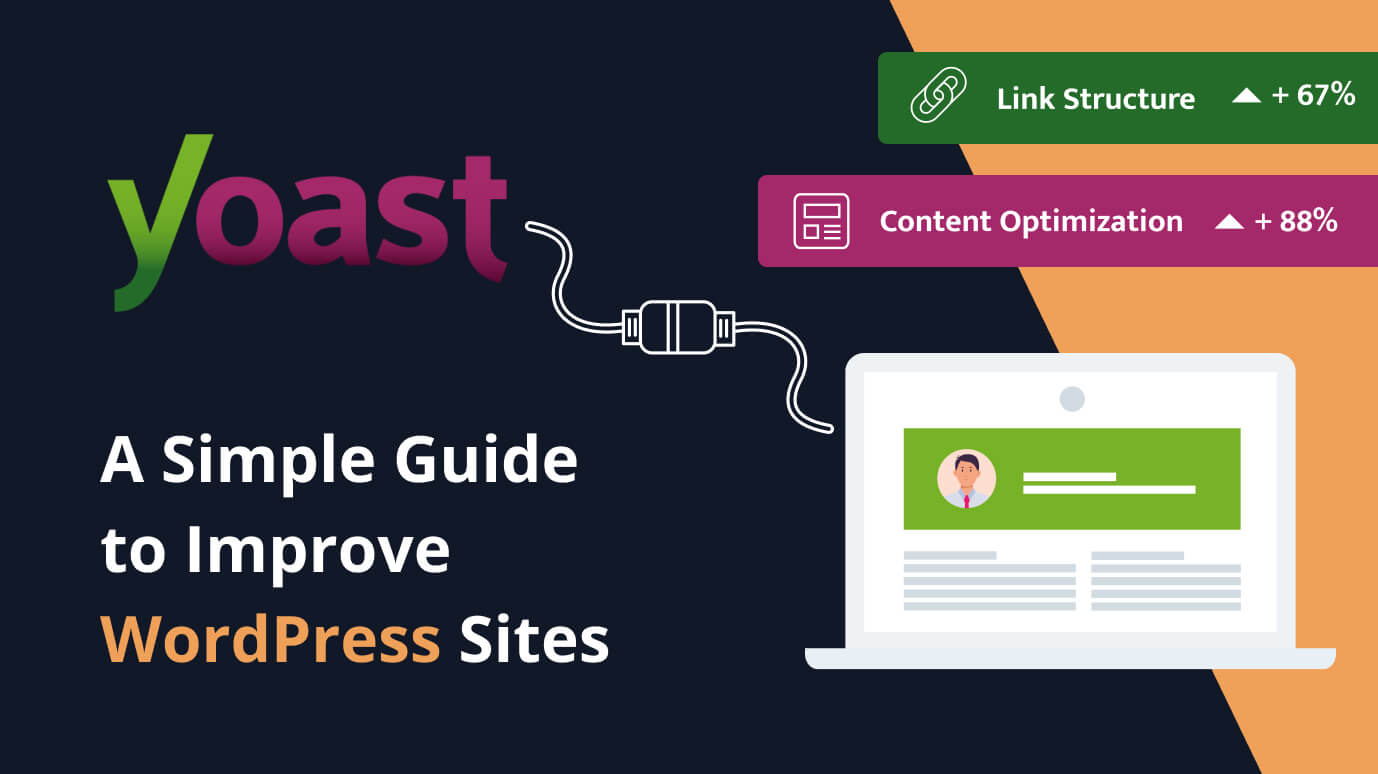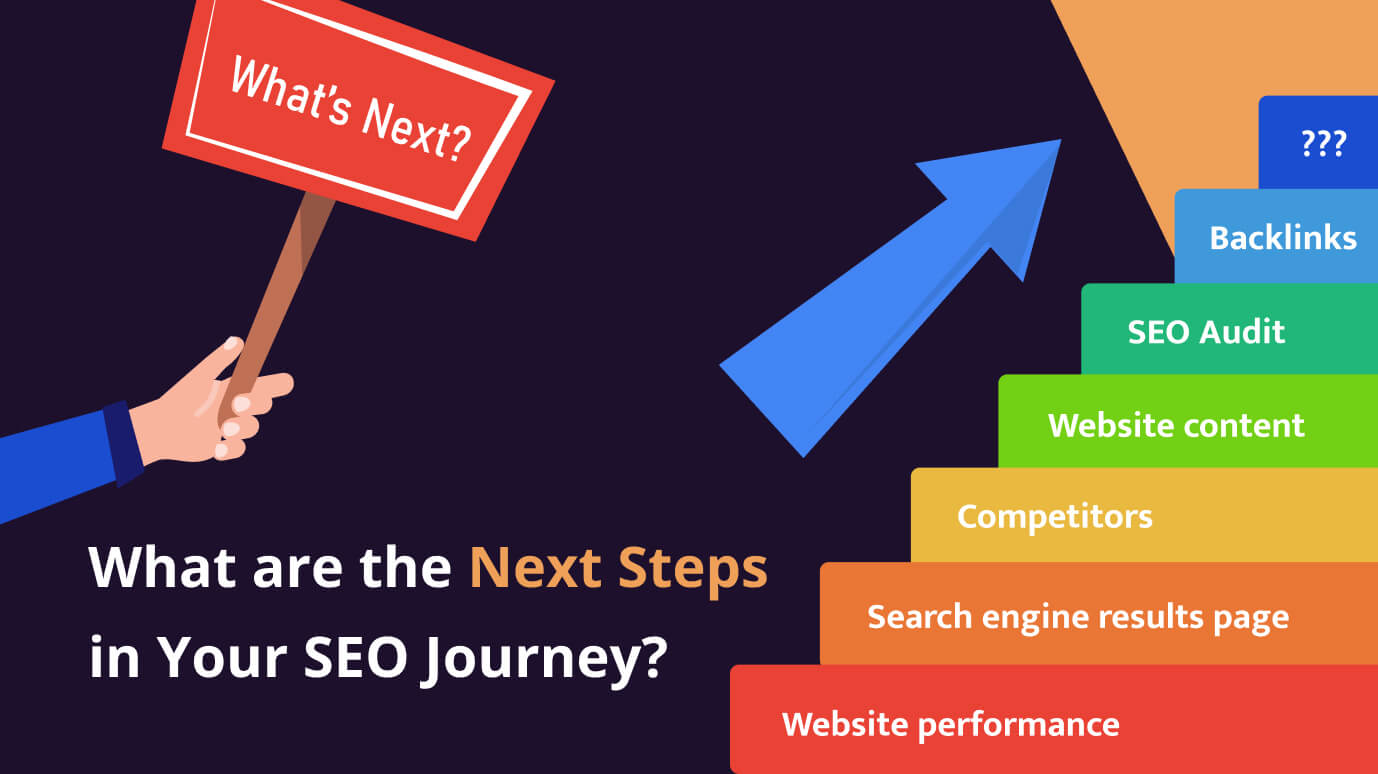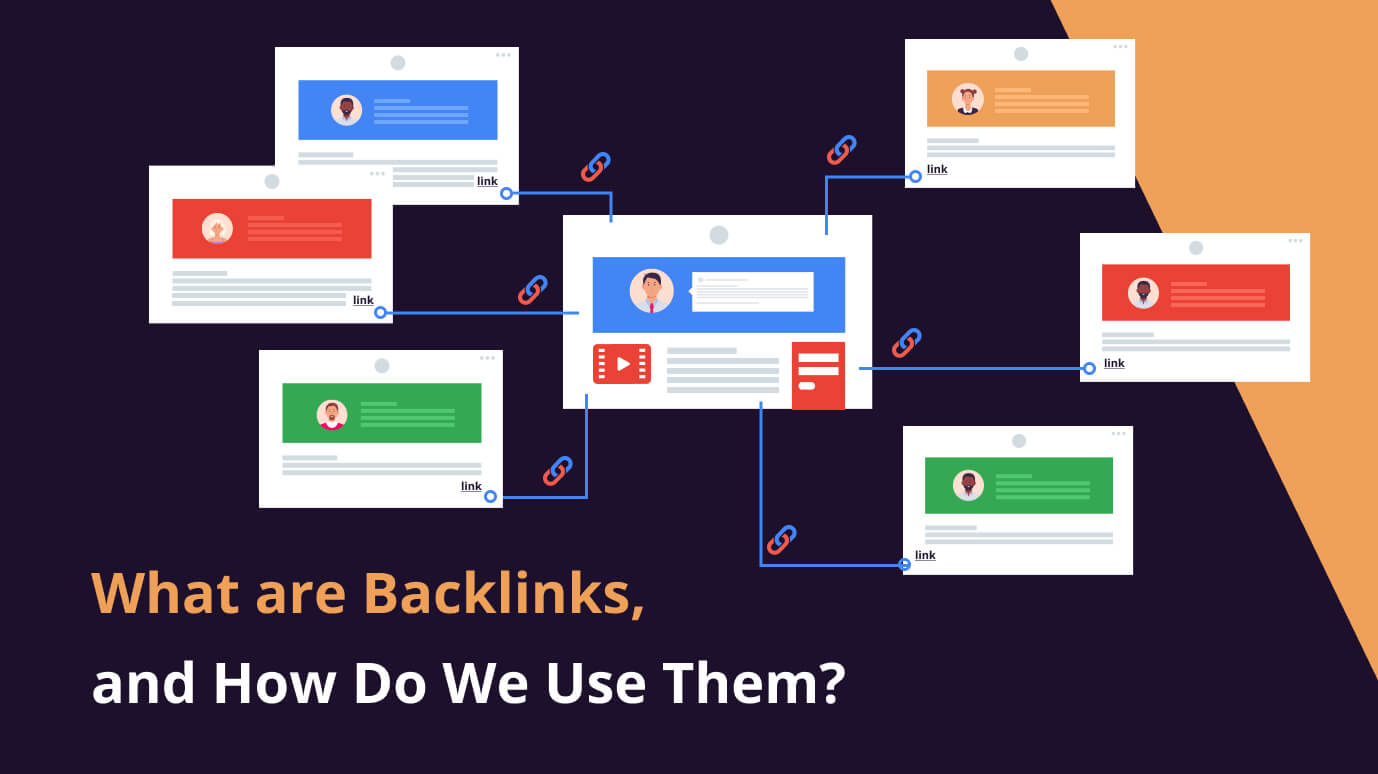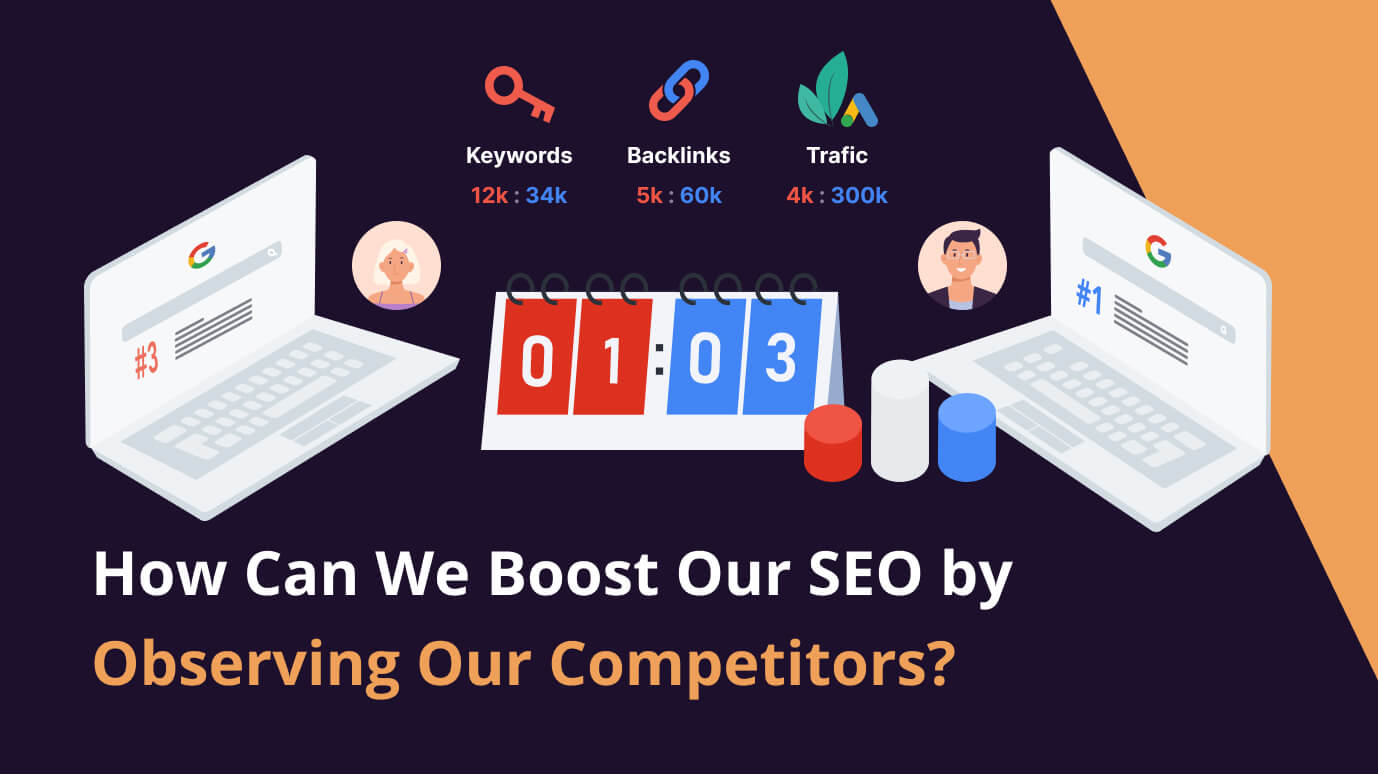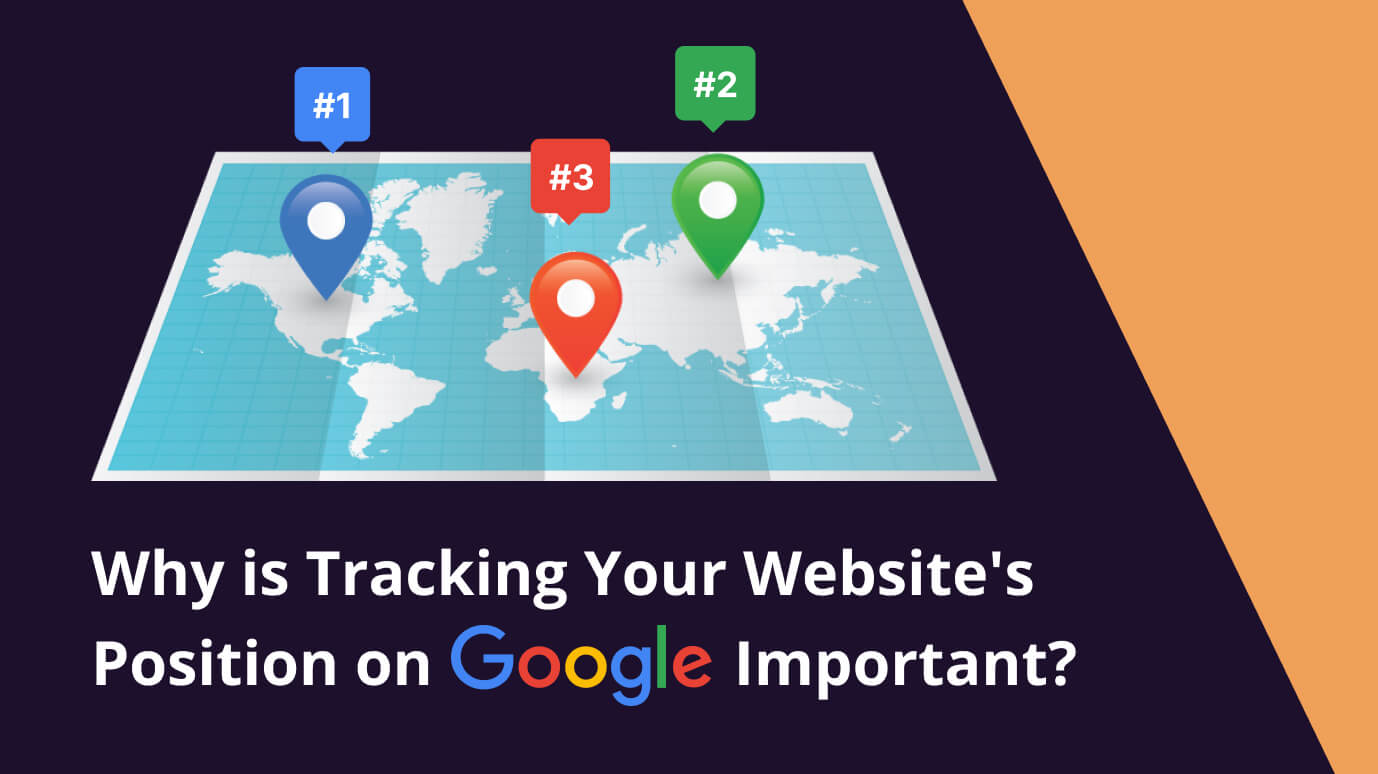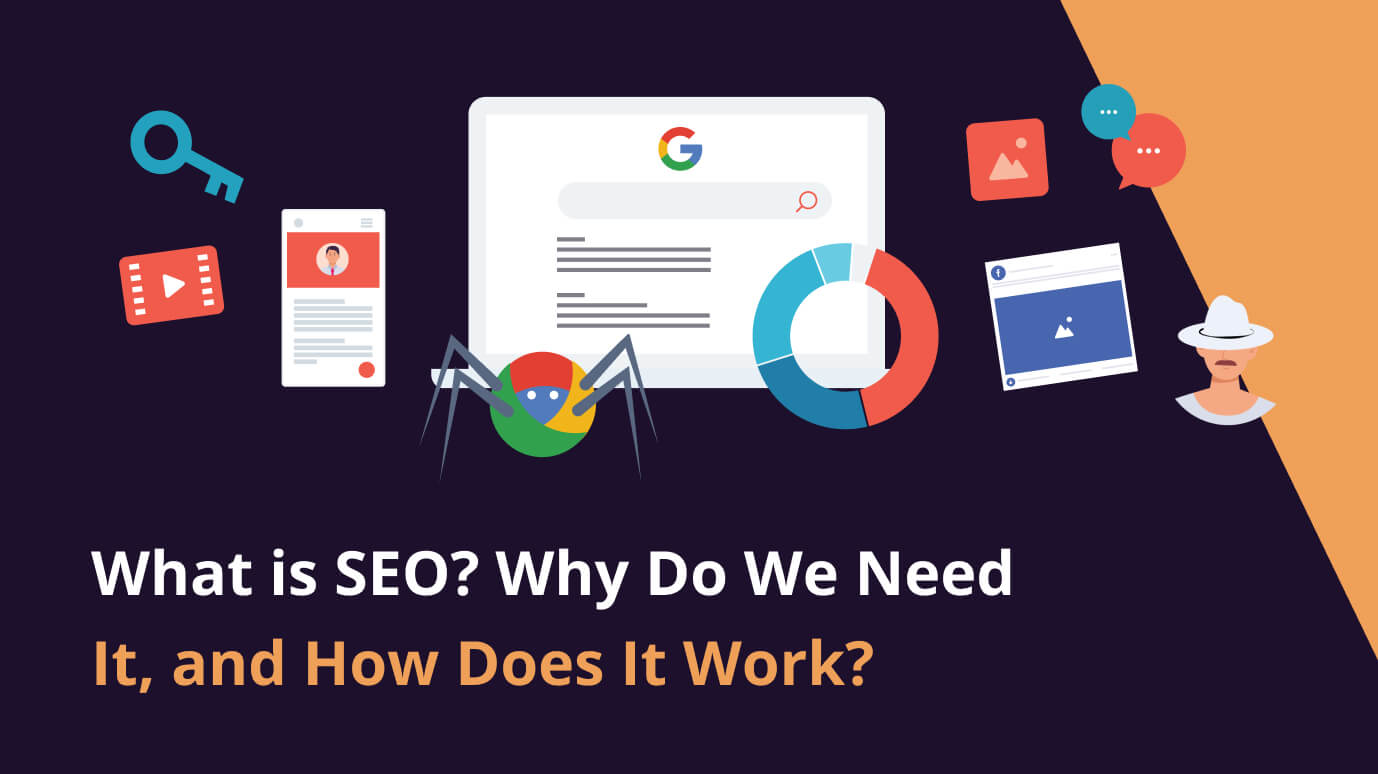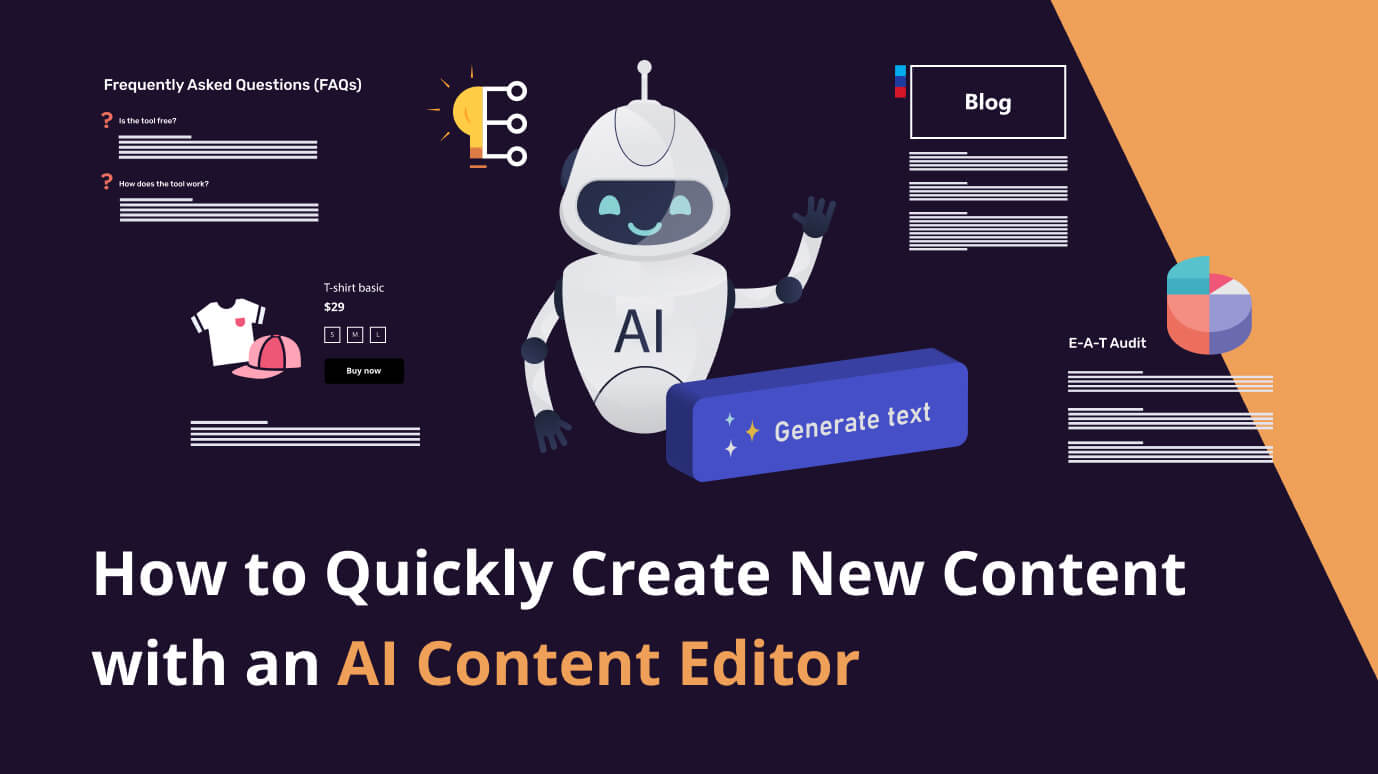
 4 min read
4 min readHow to Quickly Create New Content with an AI Content Editor
This article is part of our beginner's series on SEO. If you missed the first part, you can read "Getting Started with SEO: A Beginner's Guide" here.
In our last article, we explored how to use Seodity to understand our competitors' strategies. Now, let's go deeper. We'll show you reliable and efficient ways to produce content.
First, we will describe a few methods for easily generating articles. Next, we will focus on editing and refining these articles to prepare them for posting on our website.
Articles Inspired by Your Competitors' High Traffic Pages
Achieving organic traffic comes with understanding what works for the competition. Remember, their high-traffic pages are your potential high-traffic articles! We already know how to locate these pages, now let's explore how we can utilize them to craft our own articles.
1. After choosing the specific page you want to base your article upon, choose "More" beside page URL and click "Generate Article"
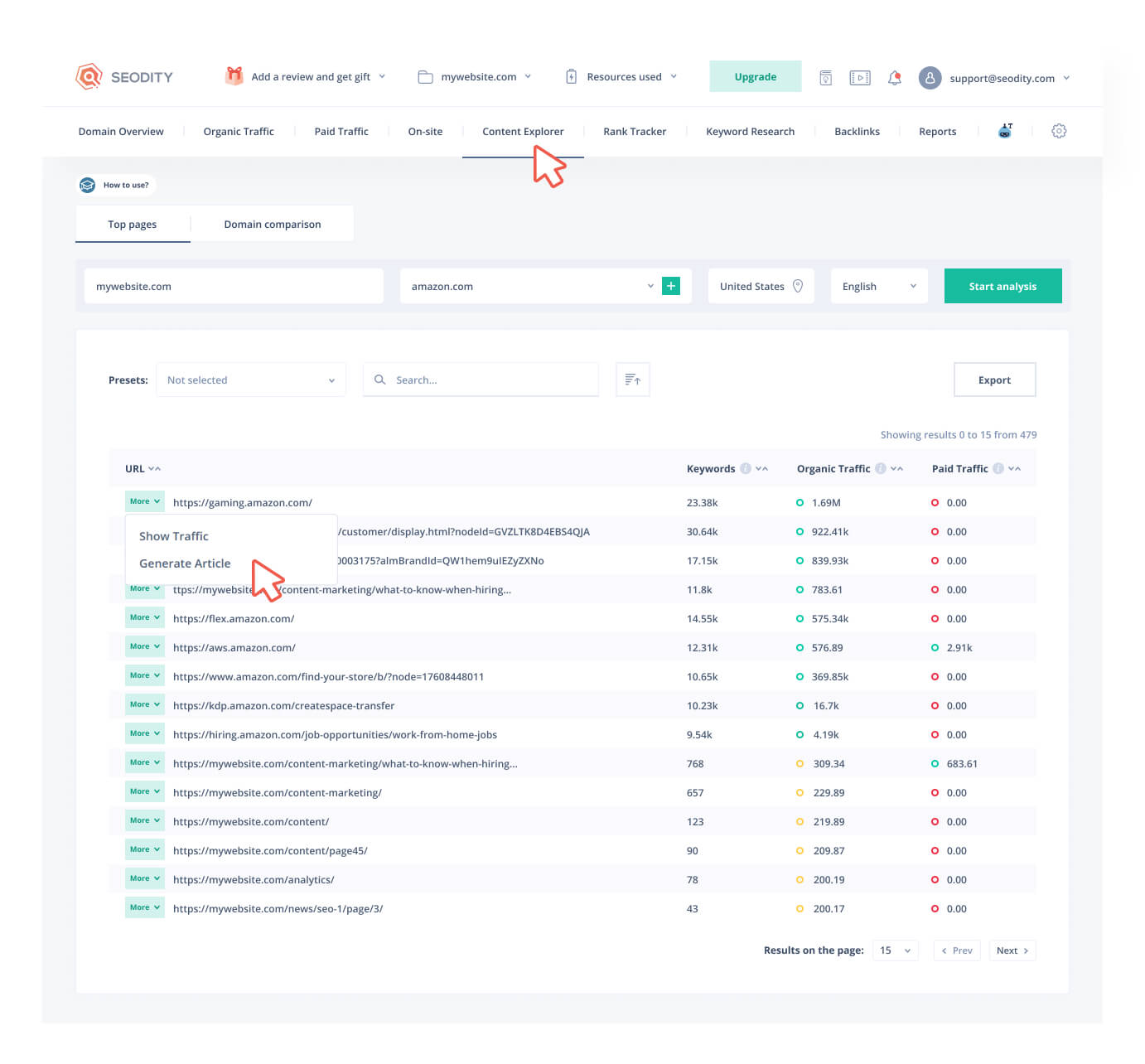
2. Choose article title, language and size and click "Create"
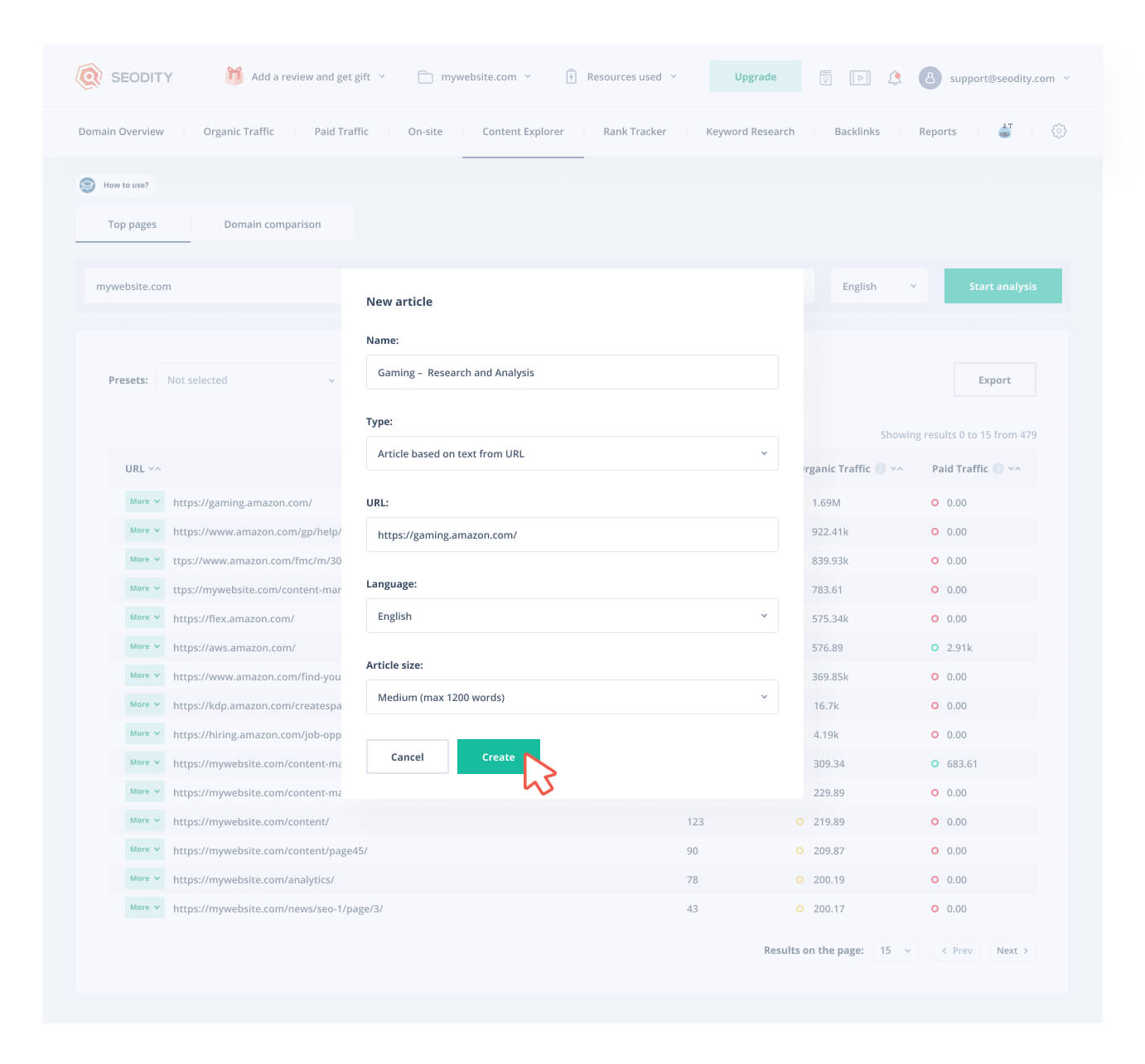
After a moment of analyzing data, the article will be started to be generated.
Article Ideas with the Use of Keyword Gap Feature in Organic Traffic
The Keyword Gap feature is an incredibly powerful tool in your arsenal for generating high-value content ideas. This feature allows you to compare your site's organic keyword profile with that of your competitors. It reveals gaps where your competitors rank for certain keywords that you don't, presenting opportunities for you to create content to fill that gap and rank for those keywords as well.
There are many ways to approach this topic, but one potential method to identify optimal keywords for your article would be:
1. Select your competitor in the "Competitors" field within the Organic Traffic module.
2. Sort by Keyword Difficulty (KD) to find keywords that have low KD, making it easier to rank for them.
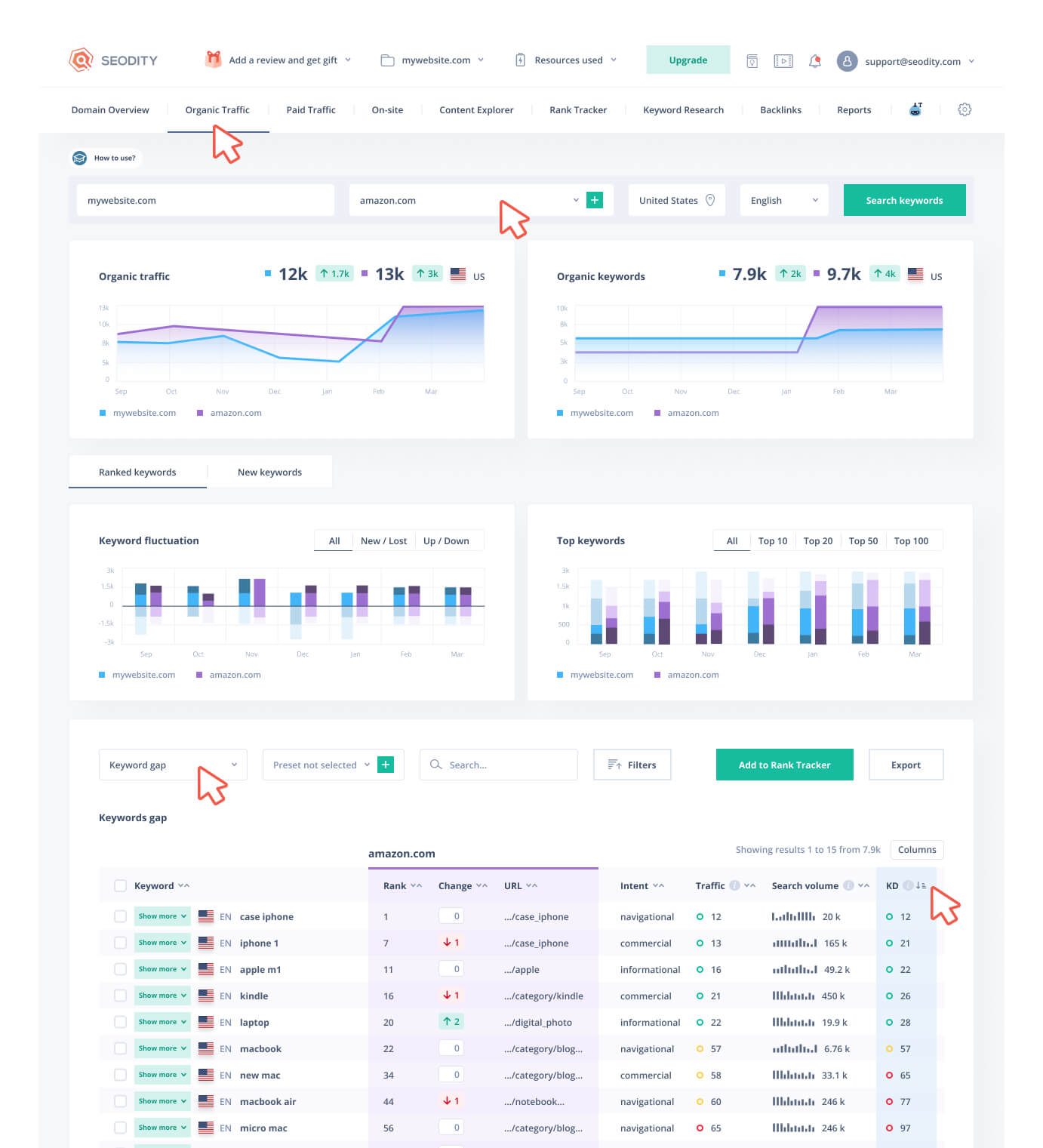
3. Select keywords that pique your interest. Look for comparable keywords on the same topic, potentially linking to the same page. This will enable you to create an article that's comprehensible and logical.
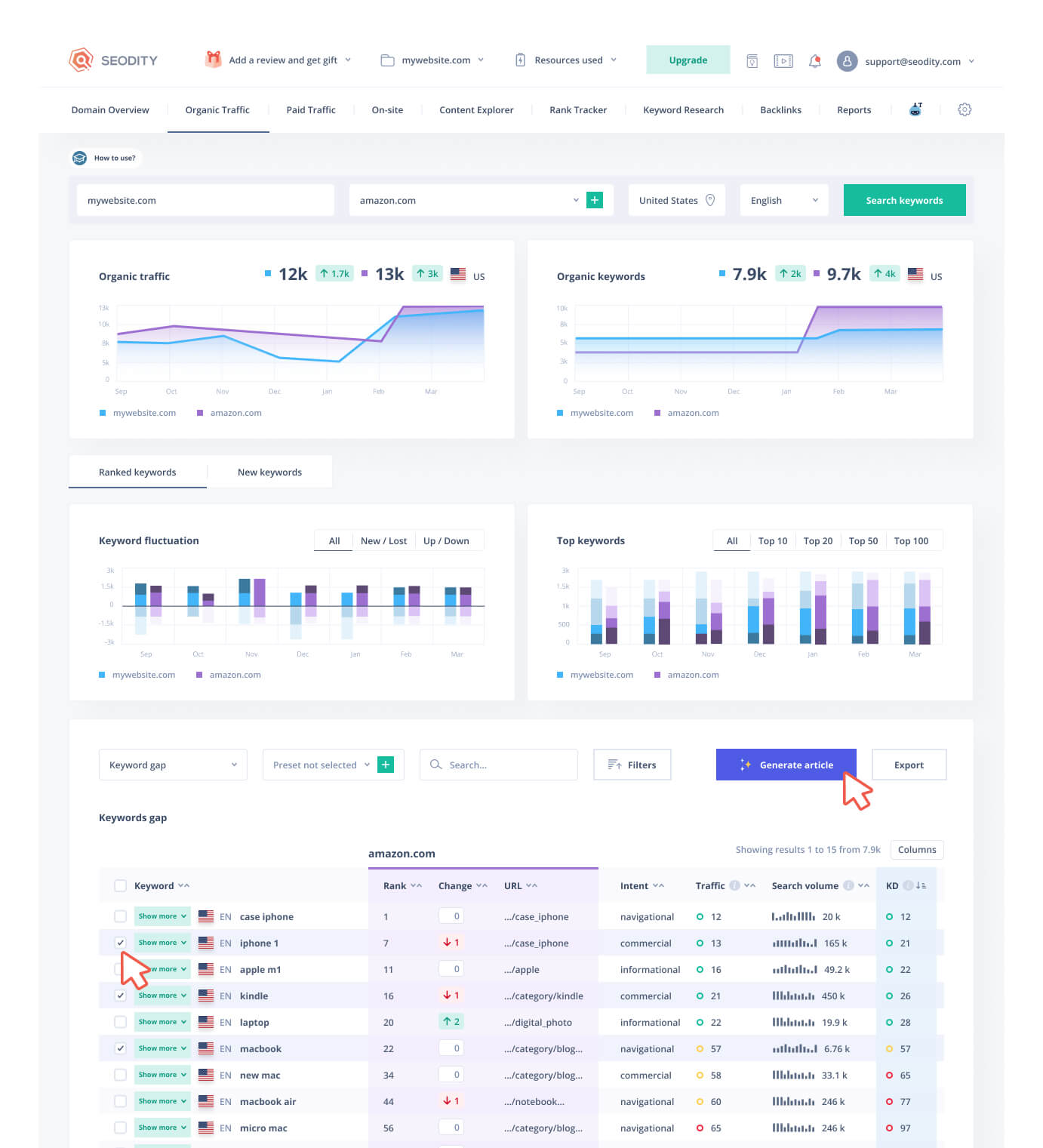
4. Click "Generate Article", enter name, select language, determine the article size, then click "Create".
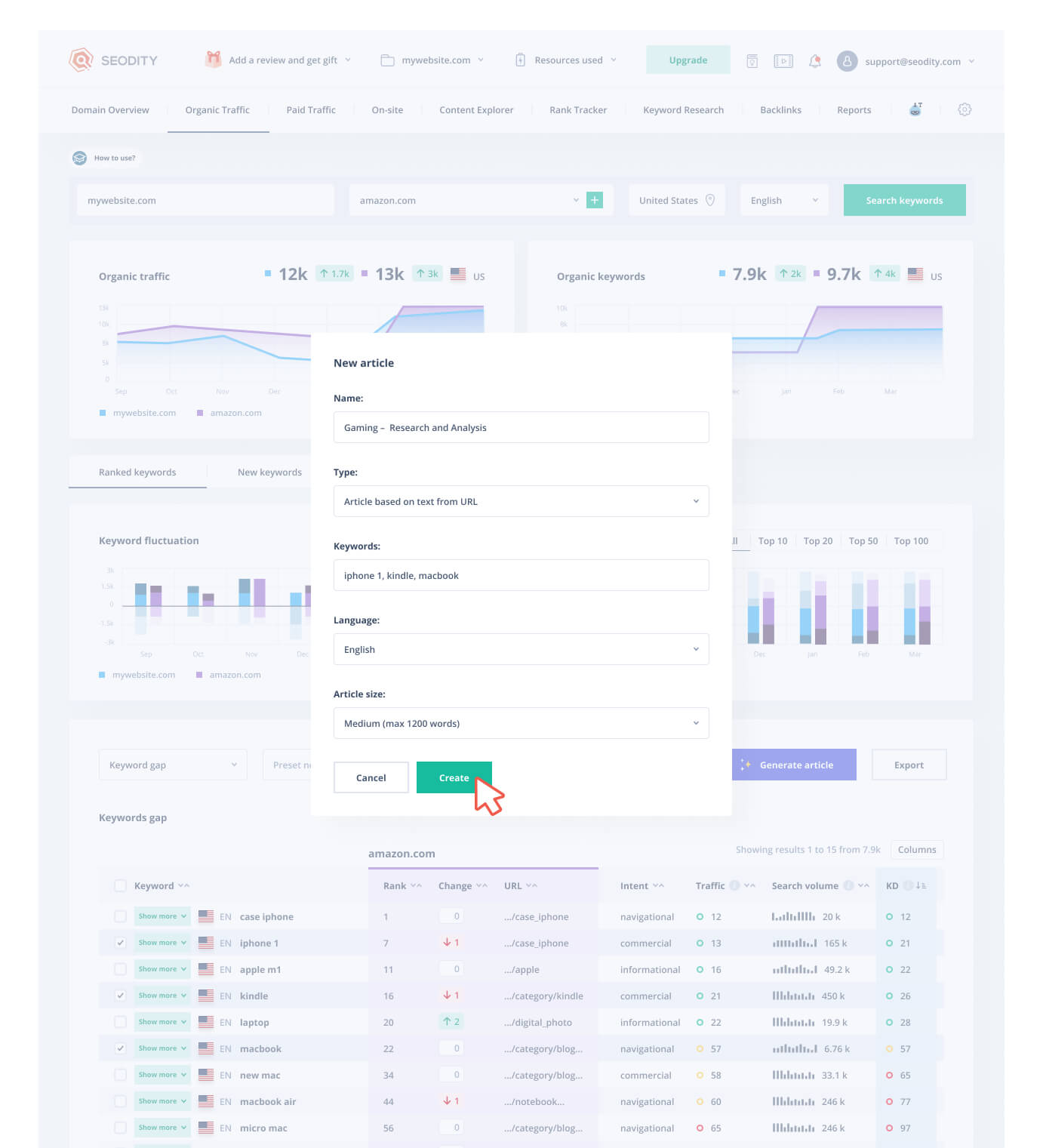
Your article will be generated after a while.
You can experiment with the Organic Traffic module to find articles that best suit you. For example, consider sorting by search volume to identify high-traffic keywords, or sort by Rank to determine the topics where you have a better chance of outranking your competition. Refining your search results to show only long-tail keywords is also a practical strategy. These phrases, which are usually longer and more specific, are less competitive and can improve your search engine ranking.
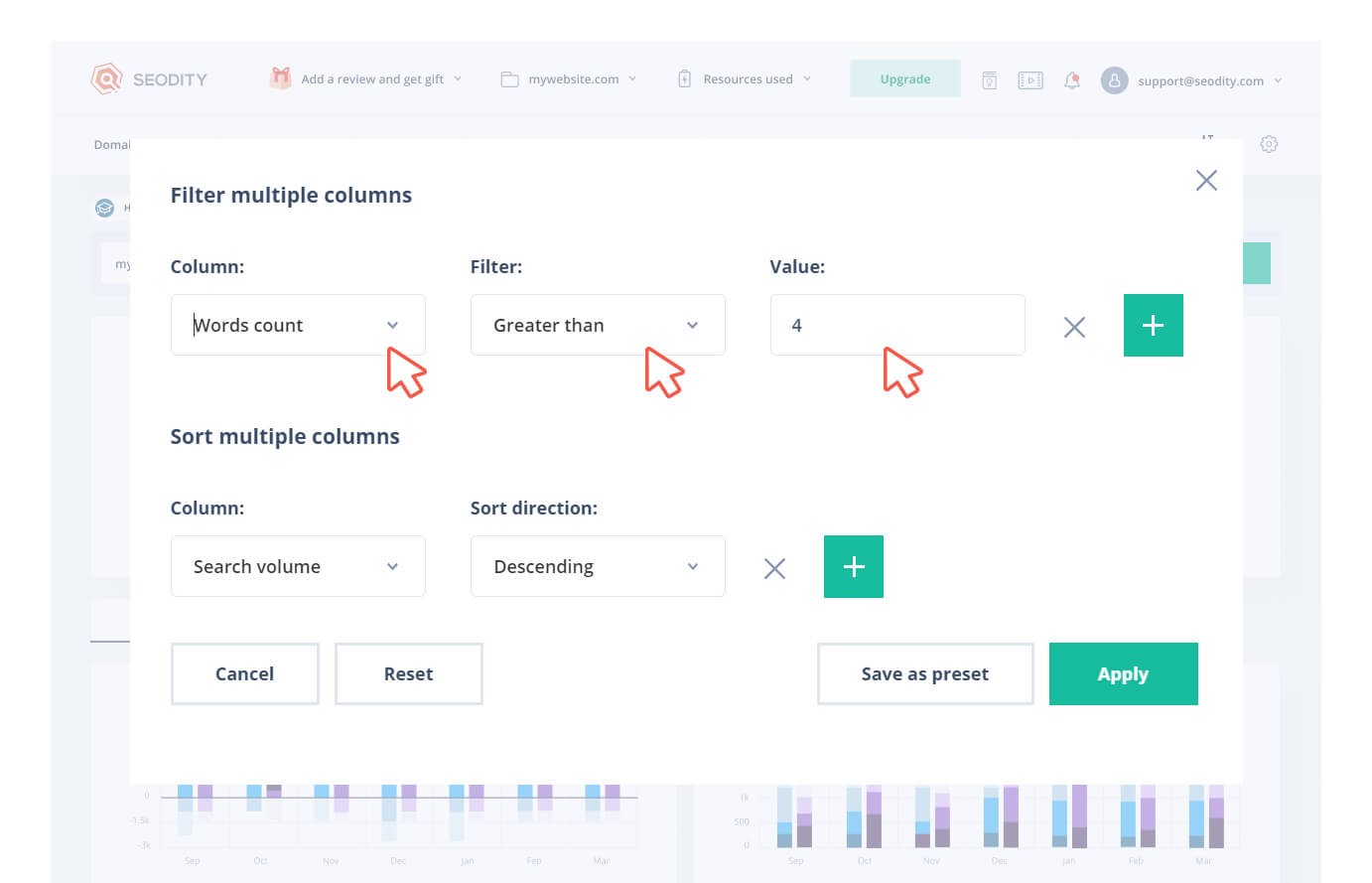
Using AI Content Editor to Optimize and Prepare Articles for Posting on a Website
After generating your article using the methods above, optimizing an existing piece, or perhaps even writing an article from scratch, the easiest approach is to utilize an AI Content Editor. It's specifically designed to help produce and optimize content swiftly, while adding a personal touch.
You can utilize our AI Assistant to quickly "Shorten", "Expand", "Simplify", or "Rephrase" any chosen text according to your requirements. Additionally, there's an option to "Correct Grammar" if you merely want to cross verify whether the content you have generated is well-written.
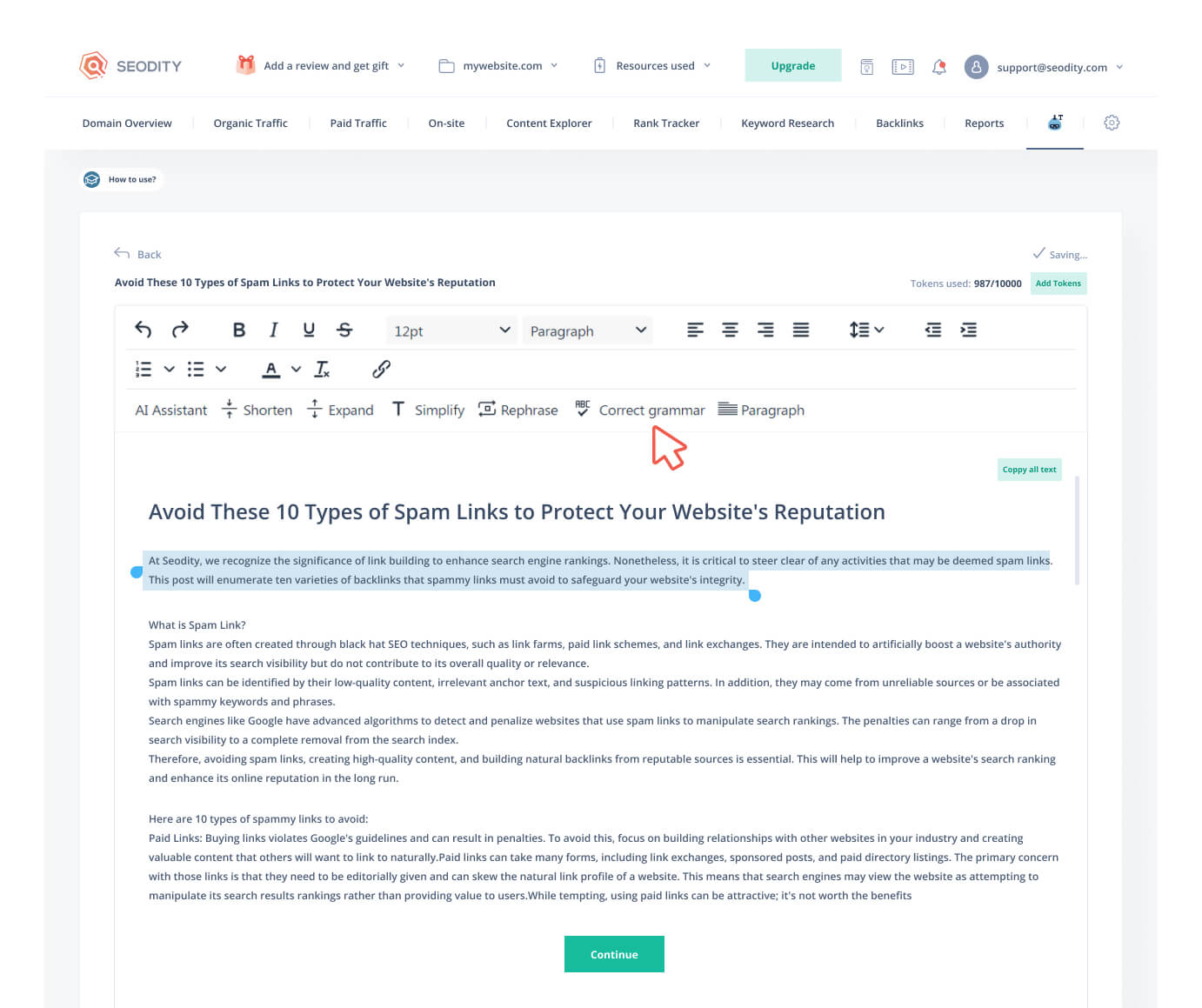
When writing an article from scratch, you'll find the "Paragraph" option to be incredibly useful. Simply write the title of the subsequent paragraph, select it, and then choose "Paragraph."
After deciding on the length of the paragraph, click 'Generate'. Our AI Assistant will then generate the entire paragraph of your article for you. You can further refine this later using other AI options.
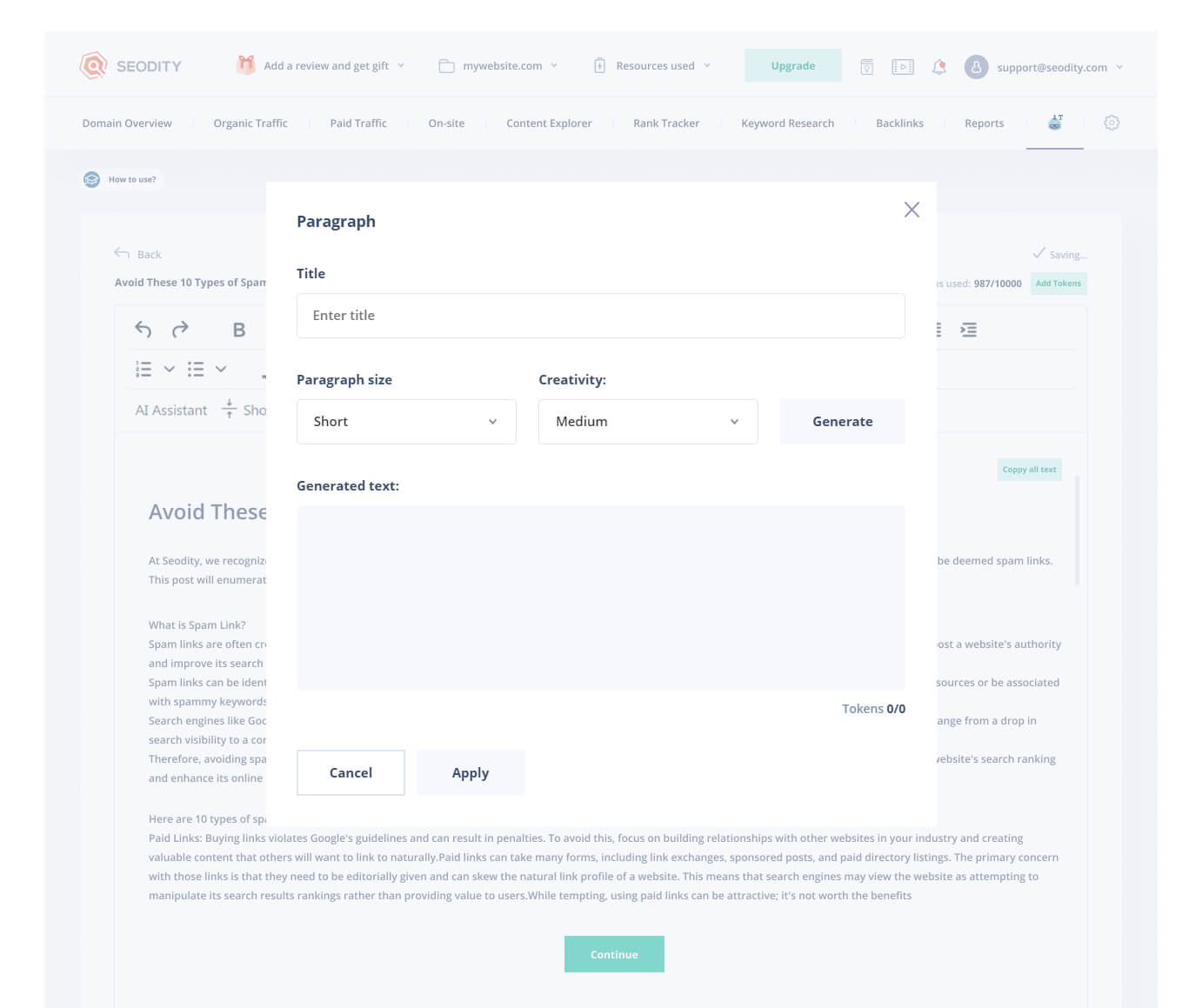
Another useful feature is the capability to create an FAQ at the end of an article, enhancing the chances of appearing in Google's "People Also Ask" box. Simply right-click at the bottom of the editor and select "FAQ". Then, supply the questions, and the answers to them will be automatically generated using AI.
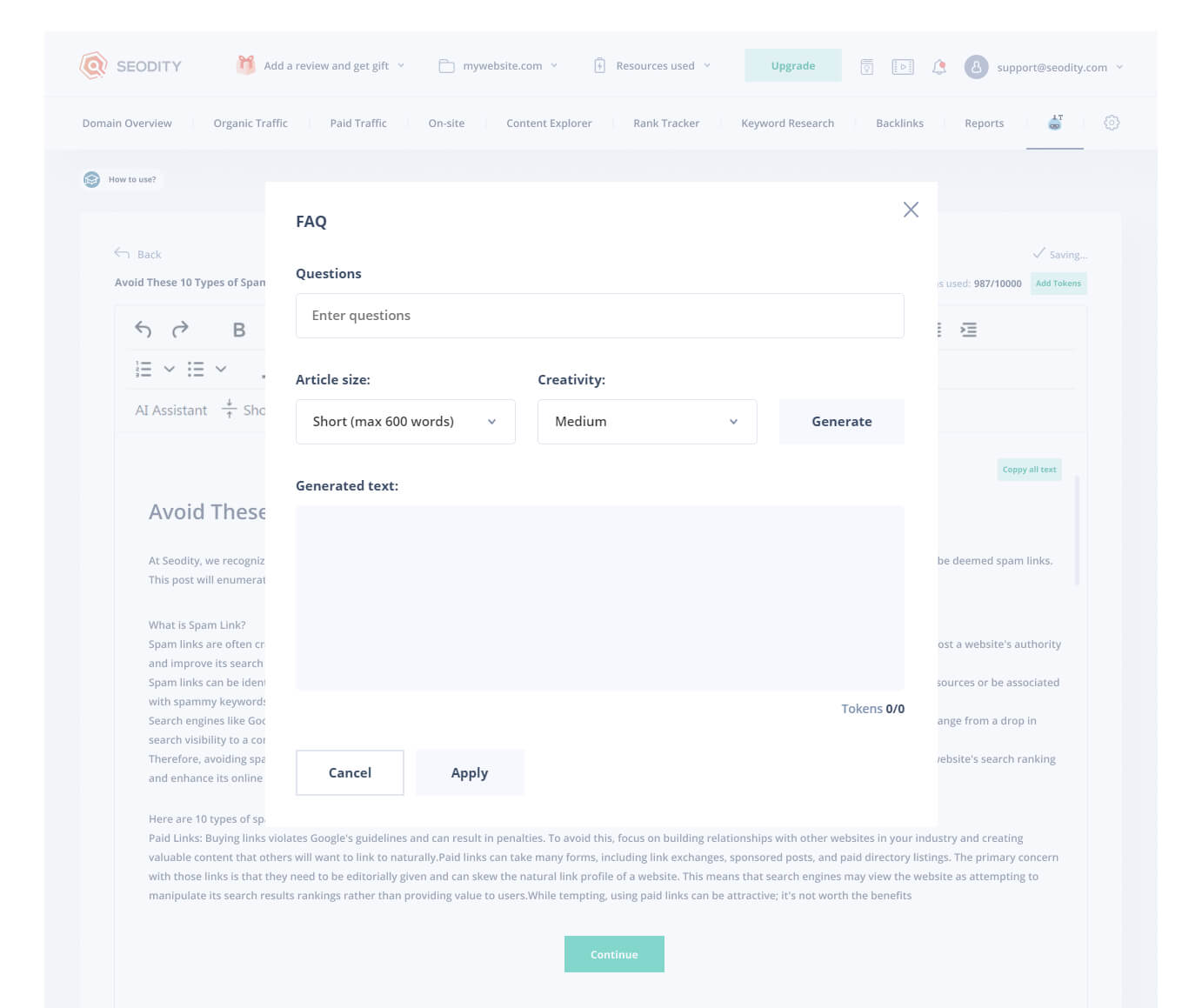
Conclusion
Simply put, SEO tools like Seodity can enhance your online visibility. Use features like Keyword Gap and AI Content Editor to create engaging, SEO-friendly content.
Learn from your competitors' tactics to drive more organic traffic. Fill keyword gaps and aim for high search engine ranks. With the right editing tools, your content will reach more people and provide a great user experience.
Keep learning, trying new approaches, and improving.
In the next article, we'll explore on-site auditing - assessing your website's health and speed. These checks can crucially impact your SEO and site's usability. Click here to read the article.

Co-founder of Seodity
.svg)
